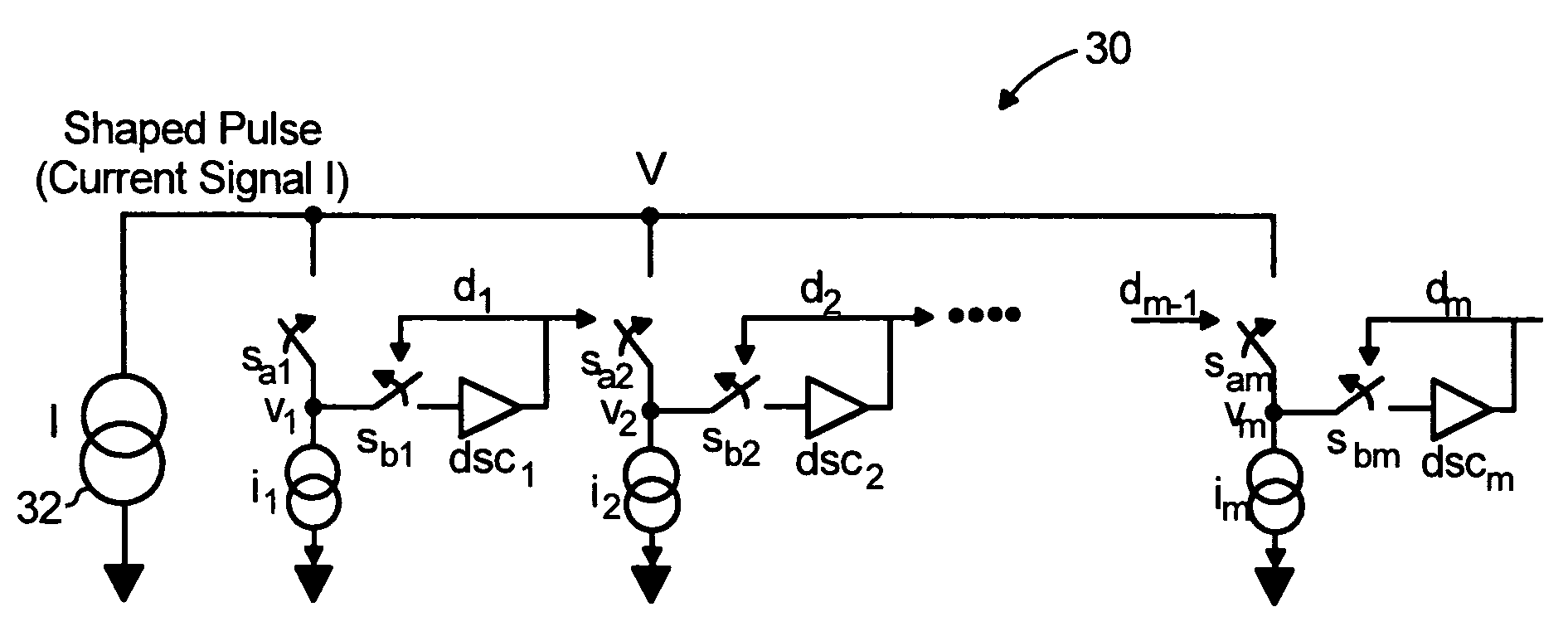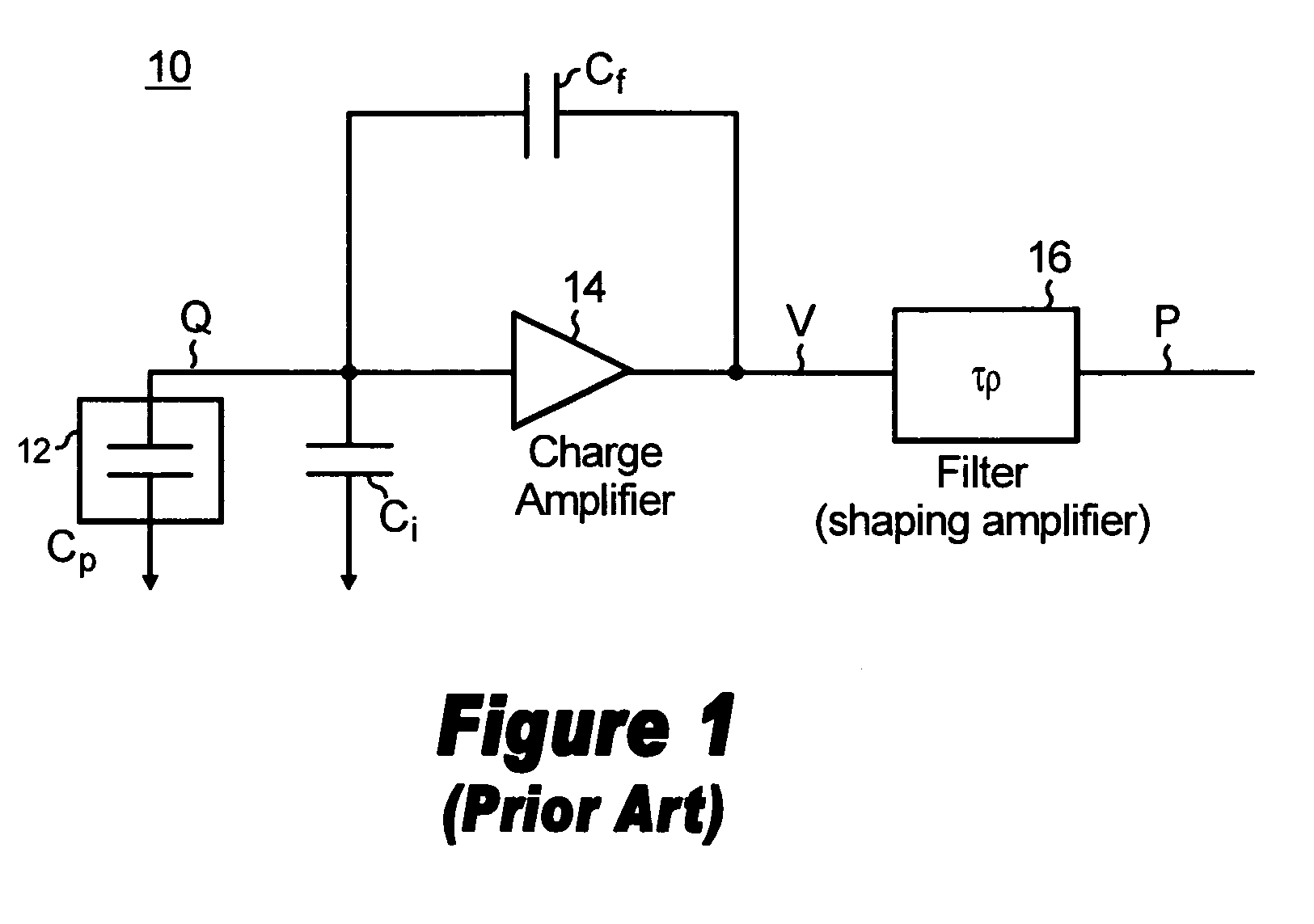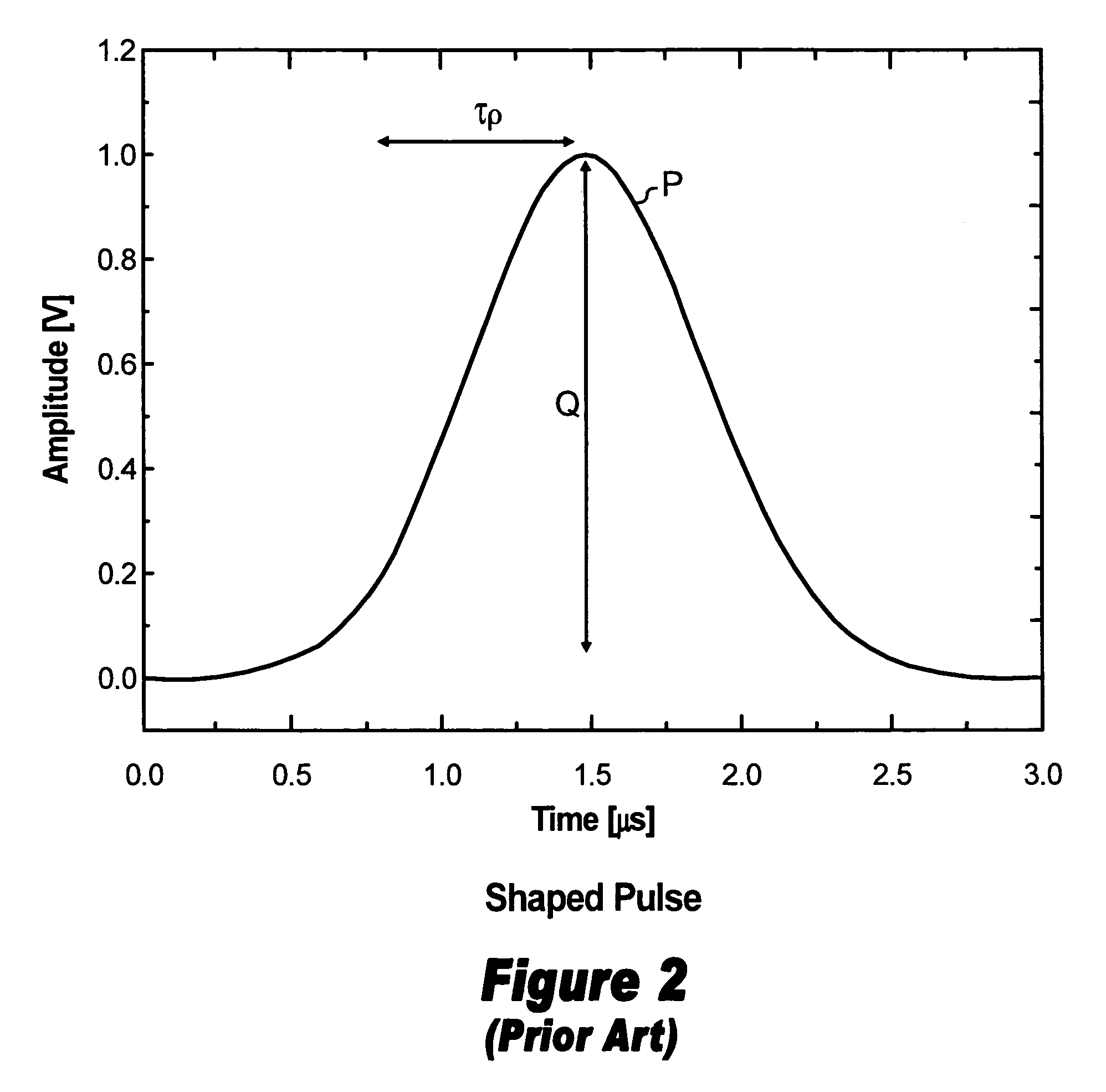Method and apparatus for clockless analog-to-digital conversion and peak detection
a clockless analog-to-digital and peak detection technology, applied in the field of analog-to-digital conversion, can solve the problems of inability to integrate efficient circuits for the processing of shaped pulses, inability to discriminate multiple windows, and inability to achieve multiple windows at the same time, so as to minimize the processing time of shaped pulses and reduce the loss of data. , the effect of power
- Summary
- Abstract
- Description
- Claims
- Application Information
AI Technical Summary
Benefits of technology
Problems solved by technology
Method used
Image
Examples
Embodiment Construction
[0043]A clockless analog-to-digital converter and peak detector circuit 30 formed in accordance with the present invention and shown in the schematic diagram of FIG. 6 provides peak detection and analog-to-digital conversion of a shaped pulse, which represents an ionizing event, from a front-end portion of a radiation detection system. The circuit 30 exhibits low power dissipation, requires little power, and does not need a clock signal. The circuit 30 is preferably operated in current-mode, which means that it operates on the basis of current rather than voltage. If the shaped pulse is a voltage signal, a voltage-to-current converter is preferably used to convert the signal before processing by this circuit. A representative voltage-to current conversion circuit 33 is shown in FIG. 12, in which the voltage signal is applied at terminal A and the current signal is obtained from terminal B. The circuit 33 preferably includes four (4) transistors Mr1, Mr2, M1, M2, a resistor R1, and a...
PUM
 Login to View More
Login to View More Abstract
Description
Claims
Application Information
 Login to View More
Login to View More - R&D
- Intellectual Property
- Life Sciences
- Materials
- Tech Scout
- Unparalleled Data Quality
- Higher Quality Content
- 60% Fewer Hallucinations
Browse by: Latest US Patents, China's latest patents, Technical Efficacy Thesaurus, Application Domain, Technology Topic, Popular Technical Reports.
© 2025 PatSnap. All rights reserved.Legal|Privacy policy|Modern Slavery Act Transparency Statement|Sitemap|About US| Contact US: help@patsnap.com



